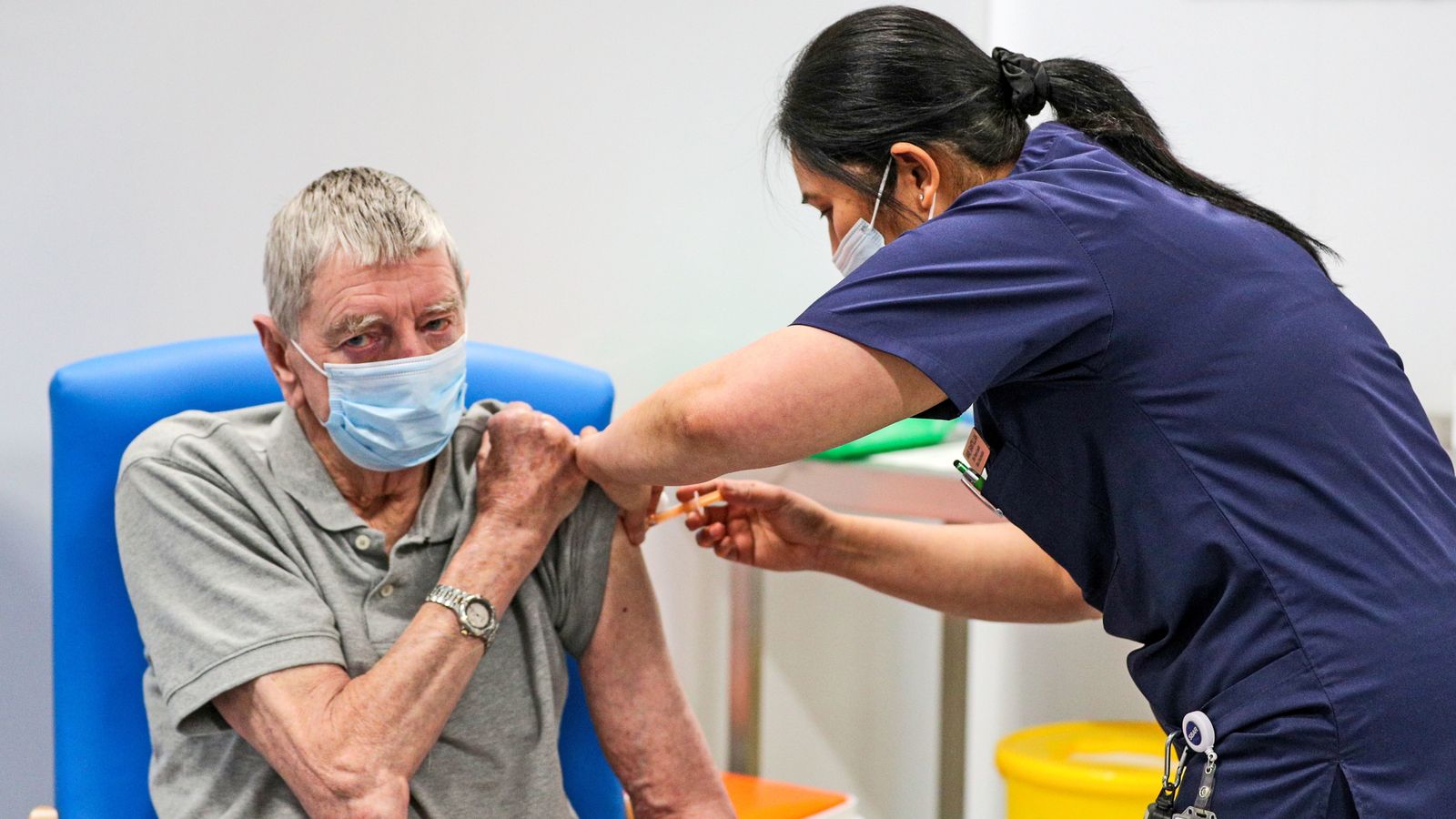The risk of developing a blood clot after having COVID-19 is eight times higher than after being given the Oxford-AstraZeneca vaccine, according to a study by Oxford University.
Cerebral venous thrombosis (CVT) occurred in 39 in a million COVID-19 patients, compared with about five in a million people given the AstraZeneca jab.
Live COVID updates from across the UK and around the world
In the study of over 500,000 coronavirus patients, the risk was reported to be around 100 times higher than normal after infection.
Numerous countries have limited use of the vaccine to certain age groups or paused its rollout – with Denmark even dropping the jab from its vaccination programme permanently – following reports of very rare cases of blood clots.
The UK’s medical regulator has said the vaccine is still safe and effective but has limited its use in those under 30 as this age group is less at risk of becoming seriously ill with coronavirus.
However, the Oxford study suggested around a third (30%) of the CVT reports after COVID-19 infection were in people under 30.
Scientists have said the technology used in the Oxford-AstraZeneca vaccine, harnessing an adenovirus, has been linked to a slightly increased risk of blood clots.
It’s the same explanation for the Johnson & Johnson vaccine, which has been paused in the US after a handful of clotting reports there.
Please use Chrome browser for a more accessible video player
In over 480,000 people who received the Pfizer or Moderna vaccines, which use mRNA technology instead, CVT occurred in about four in a million people.
The risk of developing CVT after taking either of these vaccines is about 10 times lower than after being infected with coronavirus, the study suggests.
But the researchers said comparisons should be interpreted with caution because data is still being gathered.
Professor Paul Harrison, from the University of Oxford, said: “We’ve reached two important conclusions. Firstly, COVID-19 markedly increases the risk of CVT, adding to the list of blood clotting problems this infection causes.
“Secondly, the COVID-19 risk is higher than seen with the current vaccines, even for those under 30; something that should be taken into account when considering the balances between risks and benefits for vaccination.”
And Professor Sir John Bell, the university’s regius professor of medicine, told Sky News: “The best way, if you want to have a bad clotting problem, is to get COVID.
“And if you don’t get a vaccine you’re going to get COVID, and if you get COVID you’ll have a very, very much higher risk of getting a bad clotting problem.
“So, the clotting problems of the vaccine are pretty trivial compared to the real risks of getting clotting problems if you get COVID.”
Please use Chrome browser for a more accessible video player
Analysis: Even for young people, vaccination is safer than COVID
By Thomas Moore, science correspondent
There are lots of good reasons to avoid getting COVID, and this study firmly puts blood clots on the list.
It suggests the risk of suffering a CVT – a clot in a vein that drains blood from the brain – is about 100 times higher than normal in the two weeks after becoming infected with COVID.
They also looked at a similar clot in a vein in the liver. Once again the risk was much lower following vaccination than the disease.
The numbers in the study were too low to look specifically at the sub-group of people suffering a brain clot in combination with low platelets. That’s the unusual feature that has led to several countries suspending use of the AstraZeneca vaccine in younger people.
But the study does underline the benefits of vaccination.
Not only does it reduce the general risk of blood clots compared to the disease, but also death and complications affecting the heart, lung, kidney and brain. And not forgetting long COVID of course.
The older you are, the greater the benefits. But even in the young, vaccination is safer than the disease.
Countries disagree over the age at which you use an RNA vaccine instead of the AstraZeneca jab. It comes down to interpretation of the evidence and this new study really doesn’t move that debate along.






















